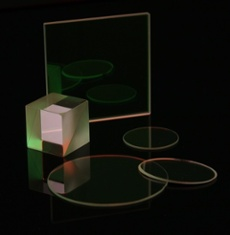 Ross has been providing quality thin-film coatings on our optics for over a decade, and last year we announced a partnership with Penn Optical Coatings to extend our capabilities even further. Here are five reasons you should consider integrating optical coatings onto your components at the time of purchase:
Ross has been providing quality thin-film coatings on our optics for over a decade, and last year we announced a partnership with Penn Optical Coatings to extend our capabilities even further. Here are five reasons you should consider integrating optical coatings onto your components at the time of purchase:
Minimize size and weight: Optical filters take up space and require additional precision mounting hardware. Integrating the coatings onto the optical elements enables optical instruments to be lighter and more compact.
Improve performance: Almost all lenses require an anti-reflection coating to reduce stray light and increase transmission, so it is usually best to buy the lenses pre-coated. Furthermore, if a system also requires wavelength filtering, flat transmission filters will cause a small amount of spherical aberration due to the thickness of the substrate. For precision optical systems, that small amount of aberration complicates the optical design.
Simplify assembly: Placing an optical coating onto an optical element eliminates steps in the assembly process and can also simplify alignment.
Single supplier: Buying optics that are already coated streamlines the purchase process and eliminates the added step of sending parts to a separate coater. Additional handling increases risk of damage to the substrate, such as scratches. Also, if there is a problem with a component, having a single supplier makes it easier to find the source of the issue.
Save money: All of the above advantages lead to cost savings by simplifying the optical and opto-mechanical design, reducing the number of components to purchase, and reducing the cost of design and assembly time.
Designing an optical component? Give us a call to learn how integrated optical coatings can improve performance and save money.
To learn more about our advanced coating capabilities, download our tip sheet: 10 Ways Coating Advancements Can Improve Optical System Performance.




